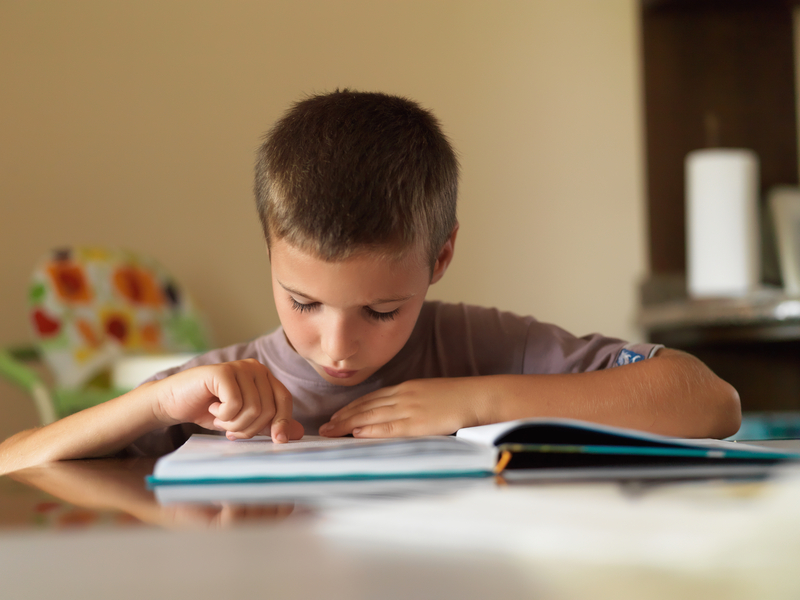Survivors' Voices
Before I started kindergarten, I knew that I could not believe what people said. My father would say, “I know you like this,” as he touched me in sexual ways that I did not like or that caused great physical pain. My early years were a real struggle. Because I could not trust what I heard, it was hard to learn sound-letter associations, memorize isolated facts, or learn anything I had heard and not seen.
The messages I received from my perpetrators were intended to prevent my telling what they were doing to me. To keep the horrible secret I learned to be silent, and the silence became my prison. I felt that I was the only child who had ever experienced such bad things. I thought I was so bad that I should separate myself from everyone. It was lonely.
Since I felt I could not talk, I did all kinds of quiet acting out in the hope that someone would notice that something was terribly wrong in my life. My behaviors were either ignored or I was told to behave, to be a good girl. During 3rd and 4th grade, I repeatedly sawed on or cut my wrist with a little knife. I wore bizarre clothing, laughed excessively, and withdrew from others.
Today I am a school psychologist. I have overcome the academic hurdles, but I continue to experience some of the emotional pain of abuse.
—Sherry Schenk
The messages about my abuse were also intended to keep me quiet, to protect my perpetrators. I was quiet and shy, but I would also do daring things with little regard for my physical safety. They called me “accident prone.” I was told I was crazy and that if I ever told, “someone” would take me away and I would never see anyone in my family again ... or I would be killed. These were terrifying threats to me.
I was a very good student, usually at the top of my class. Looking back now, I was afraid to be anything but perfect. I was afraid of what would happen at home. School became a safe haven, and I worked hard to keep it that way by staying silent about my abuse. I remember more than once trying to get teachers to take me home with them.
I am currently a school bus driver and enjoy daily contact with children in a less-structured environment. When I see symptoms of child abuse, I report what I hear and observe. I would always rather err on the side of the child. I would rather make the report than to ignore what I know.
—Lisa Buckner
In 1987, when I was asked to facilitate groups for survivors of abuse at a University Counseling Center, I knew little about the incidence or results of abuse. The frequency of women who had been abused as children was much greater than we had thought. We soon had 4 groups and more than 50 names on a waiting list. I learned about the tremendous cost of keeping the family secret. I learned of the emotional pain that can result from feeling different. As an educator I was appalled at my previous lack of awareness of the consequences of abuse. I vowed to somehow assist in giving a voice to those survivors who can teach us what it was to live with abuse and how to help today's children.
—Thelma Bear
The Incidence of Child Abuse
- 35 percent of all reported child sex abuse cases in 1988 were of girls under 6.
- Dr. Michael Durfee of the Los Angeles Department of Health Services reported in 1984 that more sexual abuse was reported on 2-year-olds than any other age group; 3- and 4-year-olds were next.
- More than 2 million cases of child abuse were reported in 1986, compared with 669,000 in 1976.
- More than 1,200 children die each year through child abuse and neglect.
- Parents who were abused as children were six times more likely to abuse their own children.
- 5 to 20 percent of psychiatric outpatients were women who had experienced incest.
- 4 out of 10 mothers of children who died of physical abuse were incest victims.
- One-half to three-fourths of adult male sexual offenders had been sexually abused.
- Sexual abuse was one of three reasons children ran away from home.
- In a questionnaire sent to 1,800 college students, one-third indicated that they had been sexually abused.
Types of Abuse
- Physical abuse: nonaccidental physical injury to a child. Examples include slapping, shaking, hitting, kicking, burning, pushing, smothering, restraining (physical or chemical), and torture (may be related to ritualistic abuse and/or satanic worship). A few forms of abuse may be attributed to lack of knowledge on the part of the parent—for instance, neurological damage can result from shaking a child. Physical abuse should be suspected if the following are present: bruises, burns, broken bones, and/or internal injuries. Further, a child who appears fearful or who startles easily may be the victim of abuse.
- Emotional maltreatment: the constant belittling and rejecting of a child, the absence of a positive emotional atmosphere. Examples include verbal abuse, inadequate or inappropriate parenting, and neglect. Any of these can destroy a child's self-esteem and weaken self-concept. The “failure to thrive” syndrome is an example of the results of emotional maltreatment. Delays in emotional development and immature behavior may indicate emotional neglect.
- Physical neglect: failure on the part of the child's caretaker to provide adequate food, clothing, shelter, or supervision. The extreme form of neglect is abandonment of a child with no regard or concern for his or her welfare.
- Sexual abuse: sexual exploitation, molestation, or prostitution of a child (p. 1). Sgroi, Porter, and Blick (1982) define child sexual abuse as a sexual act imposed on a child who lacks the emotional, maturational, and cognitive development to understand what is happening and to protect him- or herself. Sexual abuse may be overt or covert. Examples of overt abuse include unwanted touching of any part of the body, such as hugs or kisses presented as innocent signs of affection. More obvious examples include any penetration of the body with objects or body parts. Unexplained infections or diseases and external or internal injuries are symptoms that require investigation for the possibility of sexual abuse.
Figure 1
Supporting Victims of Child Abuse - table
Physical Indicators | Behavioral Indicators | |
|---|---|---|
| Physical Abuse | unexplained bruises (in various stages of healing), welts, human bite marks, bald spots | self-destructive |
| unexplained burns, especially cigarette burns or immersion-burns (glove-like) | withdrawn and aggressive—behavioral extremes | |
| unexplained fractures, lacerations, or abrasions | uncomfortable with physical contact | |
| arrives at school early or stays late as if afraid | ||
| chronic runaway (adolescents) | ||
| complains of soreness or moves uncomfortably | ||
| wears clothing inappropriate to weather, to cover body | ||
| Physical Neglect | abandonment | regularly displays fatigue or listlessness, falls asleep in class |
| unattended medical needs | steals food, begs from classmates | |
| consistent lack of supervision | reports that no caretaker is at home | |
| consistent hunger, inappropriate dress, poor hygiene | frequently absent or tardy | |
| lice, distended stomach, emaciated | self-destructive | |
| school dropout (adolescents) | ||
| Sexual Abuse | torn, stained, or bloodied underclothing | withdrawn, chronic depression |
| pain or itching in genital area | excessive seductiveness | |
| difficulty walking or sitting | role reversal, overly concerned for siblings | |
| bruises or bleeding in external genitalia | poor self-esteem, self-devaluation, lack of confidence | |
| venereal disease | peer problems, lack of involvement | |
| frequent urinary or yeast infections | massive weight change | |
| suicide attempts (especially adolescents) | ||
| hysteria, lack of emotional control | ||
| sudden school difficulties | ||
| inappropriate sex play or premature understanding of sex | ||
| threatened by physical contact, closeness | ||
| promiscuity | ||
| Emotional Maltreatment | speech disorders | habit disorders (sucking, rocking) |
| delayed physical development | antisocial, destructive | |
| substance abuse | neurotic traits (sleep disorders, inhibition of play) | |
| ulcers, asthma, severe allergies | passive and aggressive—behavioral extremes | |
| delinquent behavior (especially adolescents) | ||
| developmentally delayed |
A Safe Classroom Environment
How to Support an Abused Child
- Expectations. Teachers can honor the strength and courage of these children by having high expectations for them. Emotionality may interfere with thinking; therefore, it is important to set reasonable goals and to provide the support needed for the child to feel confident in his or her abilities. School can be a place where children rebuild their self-esteem, assert themselves, and see themselves as successful.
- Structure. Abused children may feel powerless to control much in their environment. To cope, they may: (a) refuse to even try to control what happens around them; (b) strive to manipulate everything they can by bossing peers and controlling belongings; and (c) express disproportionate feelings whenever they feel threatened. When these children fly off the handle with little provocation, they may be doing so to try to establish control. To help the child feel a sense of control in a positive manner, teachers should give accurate information and build trust. Allowing expression of feelings when appropriate through art, music, drama, and/or creative writing will also help the child to feel less controlled by pent-up emotion.
- Identity. Children who have been abused in ways that met an adult's needs and denied the child's needs have little sense of personal identity. Teachers can help by pointing out the child's strengths. Statements such as “You are a hard worker,” “You are a good friend when you help a classmate with a problem,” and “People in this classroom like you because you are fun to be with” will help the child understand how others perceive him or her. Teachers can also help abused children gain a sense of personal identity by asking questions that help them formulate a position on issues, administering interest inventories, and teaching decision-making and problem-solving skills. These skills will assist in interpersonal relationships as well as in self-understanding.
- Self-esteem. Abused children have little self-esteem. Teachers can help them learn that they are valued, accepted, and capable by fostering an environment that honors each child's uniqueness. Valuing differences will enable children to begin to see themselves as having something to contribute that others appreciate. With each successful completion of a classroom task, the child's sense of competency will be fostered.
- Sense of belonging. Abused children think they did something wrong and that they are bad. Because they have kept a secret from everyone, they assume there is a reason for them to be isolated from others. To facilitate a sense of belonging, the teacher may provide designated places for possessions, display work in the classroom, and make a conscious attempt to include these children in classroom activities. Support through teaching social skills individually, in small group settings, and through cooperative learning will also help abused children practice interacting in a nonthreatening atmosphere.
- Social skills. Because abused children have not learned to listen to their inner selves, they may focus on pleasing and meeting the needs of others while neglecting their own needs. Having been introduced to the adult world through an abusive relationship, the child may have learned inappropriate behaviors and language. The child may feel unworthy to interact on an equal basis with others and may fear rejection. A classroom climate that fosters caring, appreciation for differences, consistent rules and boundaries, and recognition for small successes will nurture a child who has been discounted at home.
- Tolerance of differences. Because each child will respond in a unique way to abuse, classroom behaviors may be variable. Some of the feelings an abused child may experience are anxiety, guilt, embarrassment, depression, anger, and resolution (Hillman and Solek-Tefft 1988). The checklist (fig. 1) may help teachers identify emotions and behaviors that might be explained by abuse. Consultation with a school psychologist, social worker, counselor, or nurse may also help teachers understand unexplainable behaviors and emotions of their students.
- Consistency. Teachers can support a child's need for structure by maintaining a consistent daily schedule, by having clear expectations for performance in both behavioral and affective areas, and by allowing the child to provide structure in his or her own way. A child's need for structure can restrict the depth of his or her encounter with the world. Teachers may respond to this need by encouraging risk-taking in ways that will encourage success and personal worth.







